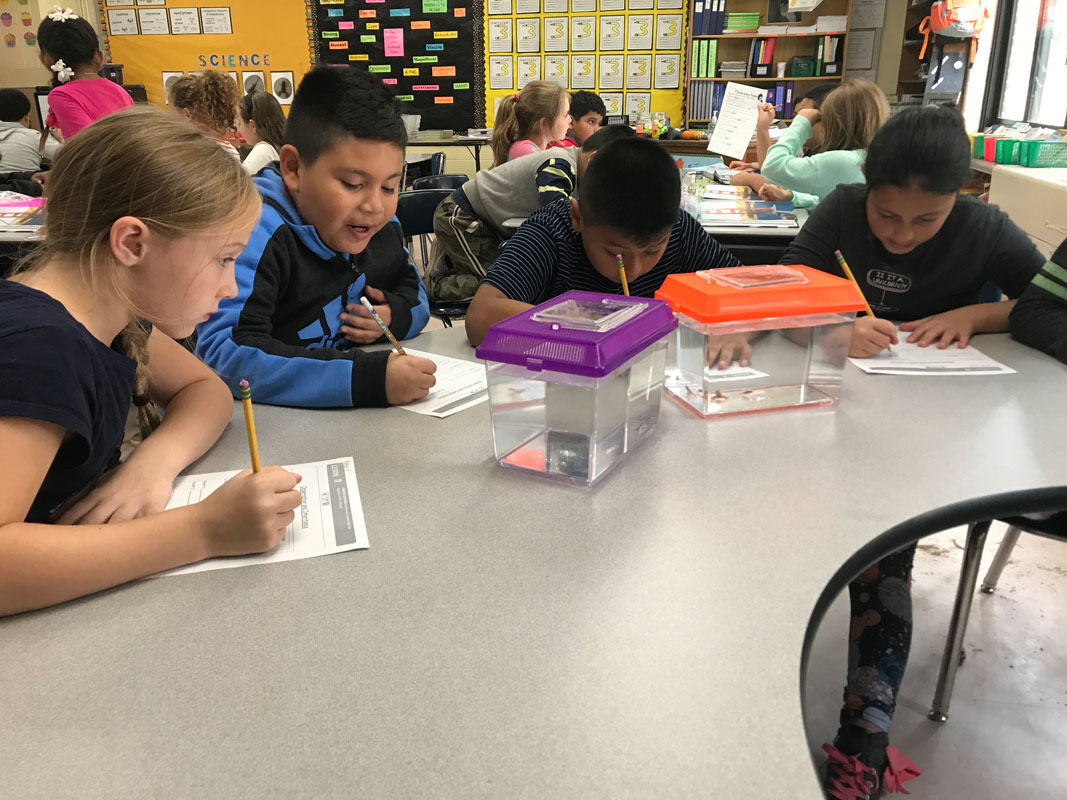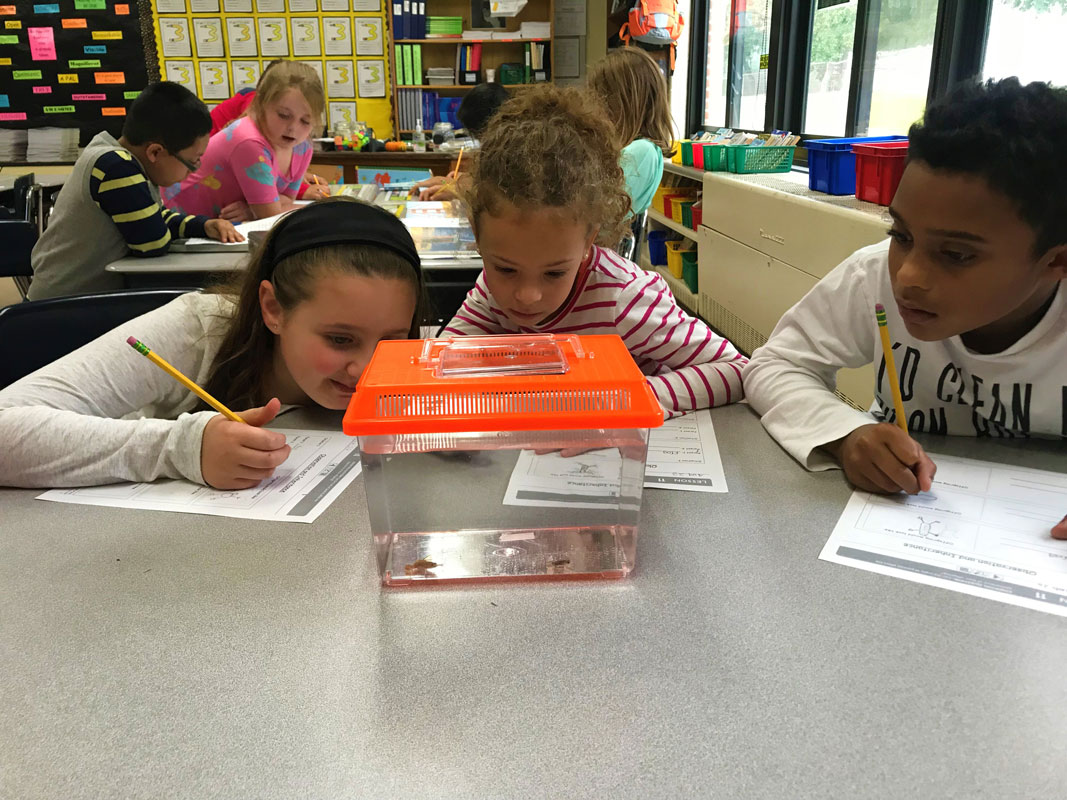Washington Primary School students are no different than their counterparts across the district. The youngsters are fascinated by anything that has to do with science. A recent third grade lesson proved the point.
Veteran teacher Victoria Creighton asked her students to write down their observations of a variety of different sized and aged frogs during various life stages.
A discussion ensued about the different “modes of transportation” used by humans and frogs and which are the most effective. Students then went outside to conduct another experiment that involved comparing running and jumping.
“The students concluded that, unlike frogs, human’s most effective way of locomotion is running,” Mrs. Creighton said.
“Frogs are amphibians, which comes from the Greek language and means ‘both lives,’” according to Defenders of Wildlife’s website. “Most frogs are born in water as tadpoles and gradually change into frogs although some frogs, known as direct developers, are born as full frogs. This allows them to be born and live far away from water, such as on mountaintops.”
Frogs are known to exist on a diet consisting of insects and small creatures such as earthworms, minnows and spiders. “The world’s tiniest frogs are smaller than a dime and the largest frog can grow to be longer than a foot and weight more than seven pounds,” according to the Defenders of Wildlife website. “There are approximately 4,740 species of frogs around the entire world. There are about 90 species of frogs in the United States. Unfortunately, about 120 amphibian species, including frogs, toads and salamanders, have disappeared since 1980. Historically, one species of amphibian would disappear every 250 years.”
The Washington youngsters were amazed to learn that frogs can be found all over the world on every continent except Antarctica. The warmer, tropical climates are especially hospitable to them.
“Frogs are known as indicator species and can give scientists valuable insight into how an ecosystem is functioning,” according to Defenders of Wildlife. The Washington third graders can’t wait for their next science lesson.
Mrs. Creighton is a 1993 Huntington High School graduate. She obtained an undergraduate degree at SUNY Oneonta and a master’s degree at Adelphi University. Following short stints in Jericho and Massapequa, she began teaching in Huntington UFSD in September 2001.


